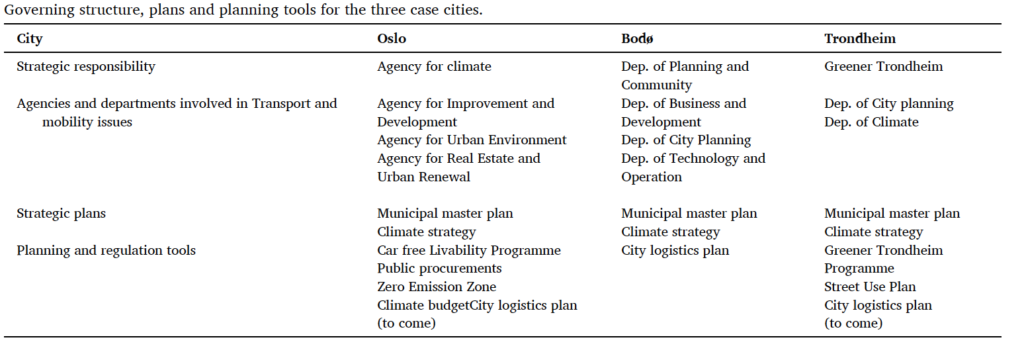A paper by Astrid Bjørgen and Marianne Ryghaug explores how governing bodies and planning authorities in Norway take urban freight transport into consideration in three different cities. Based on empirical studies of actors and processes relevant to city planning, the paper highlights challenges in integrating urban freight transport considerations in city planning.
The paper demonstrates how different planning approaches shape the integration of urban freight transport in city planning. The paper shows that early integration of freight considerations and stakeholder engagement in city planning is vital for developing more effective and sustainable transport and freight systems in urban environments. Political anchorage, geographical scope, and time are also three dimensions that considerably influence urban freight transport integration into city planning.
This paper is based on analyzing three strategic research cities in Norway that illustrate different approaches to integrating urban freight transport into city planning. All three city municipalities were identified as interesting cases for studying urban freight transport because they were partner municipalities in previous (NORSULP) and an ongoing research project (SNAPSHOT).

Insights from this analysis may be used to develop better ways of integrating freight transport into city planning in the future.
Source: Astrid Bjørgen, Marianne Ryghaug, Integration of urban freight transport in city planning: Lesson learned,
Transportation Research Part D: Transport and Environment, Volume 107, 2022
https://doi.org/10.1016/j.trd.2022.103310
